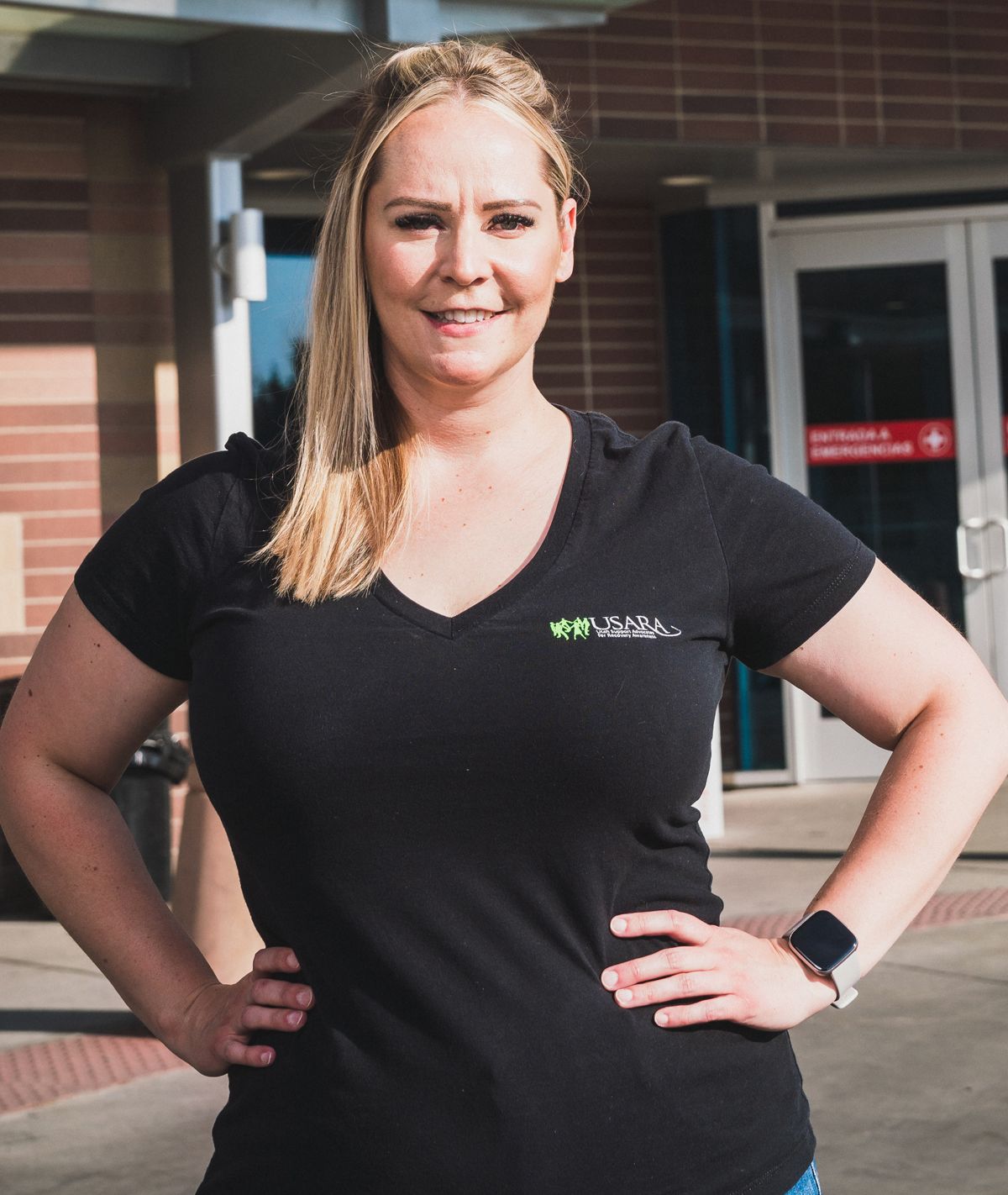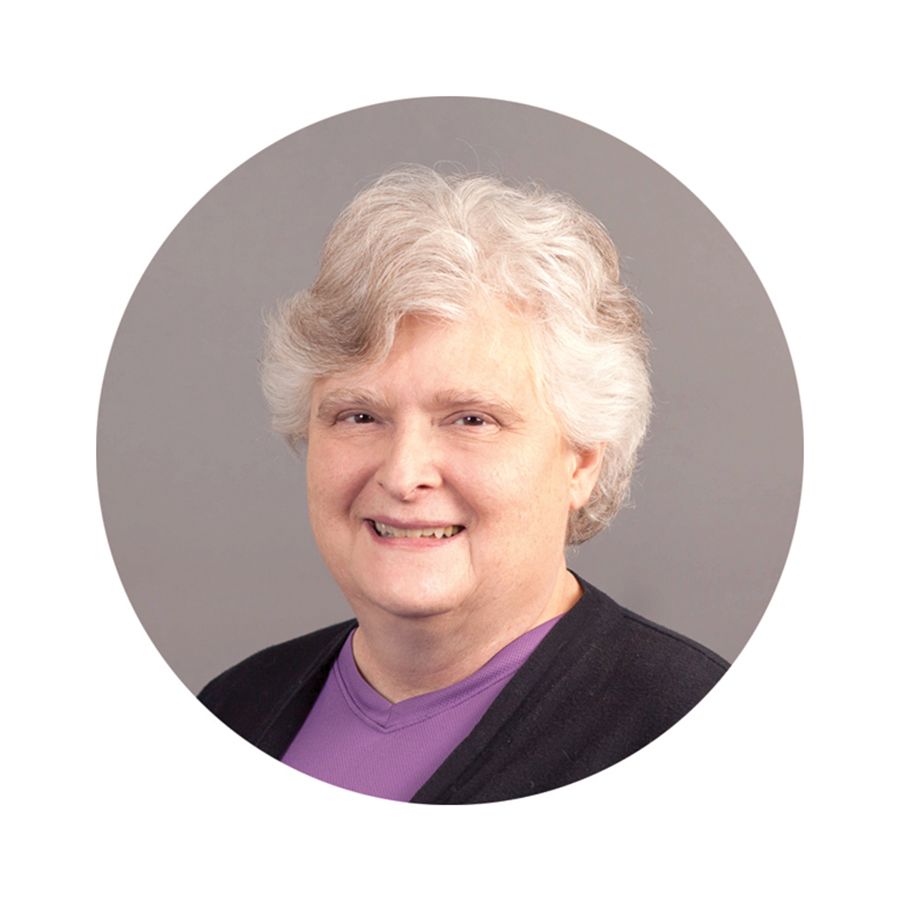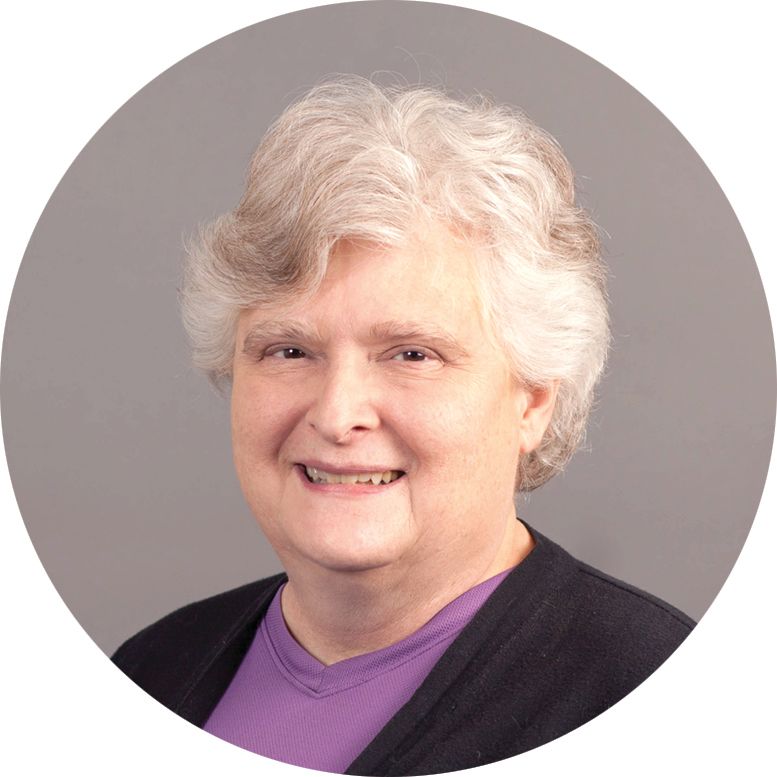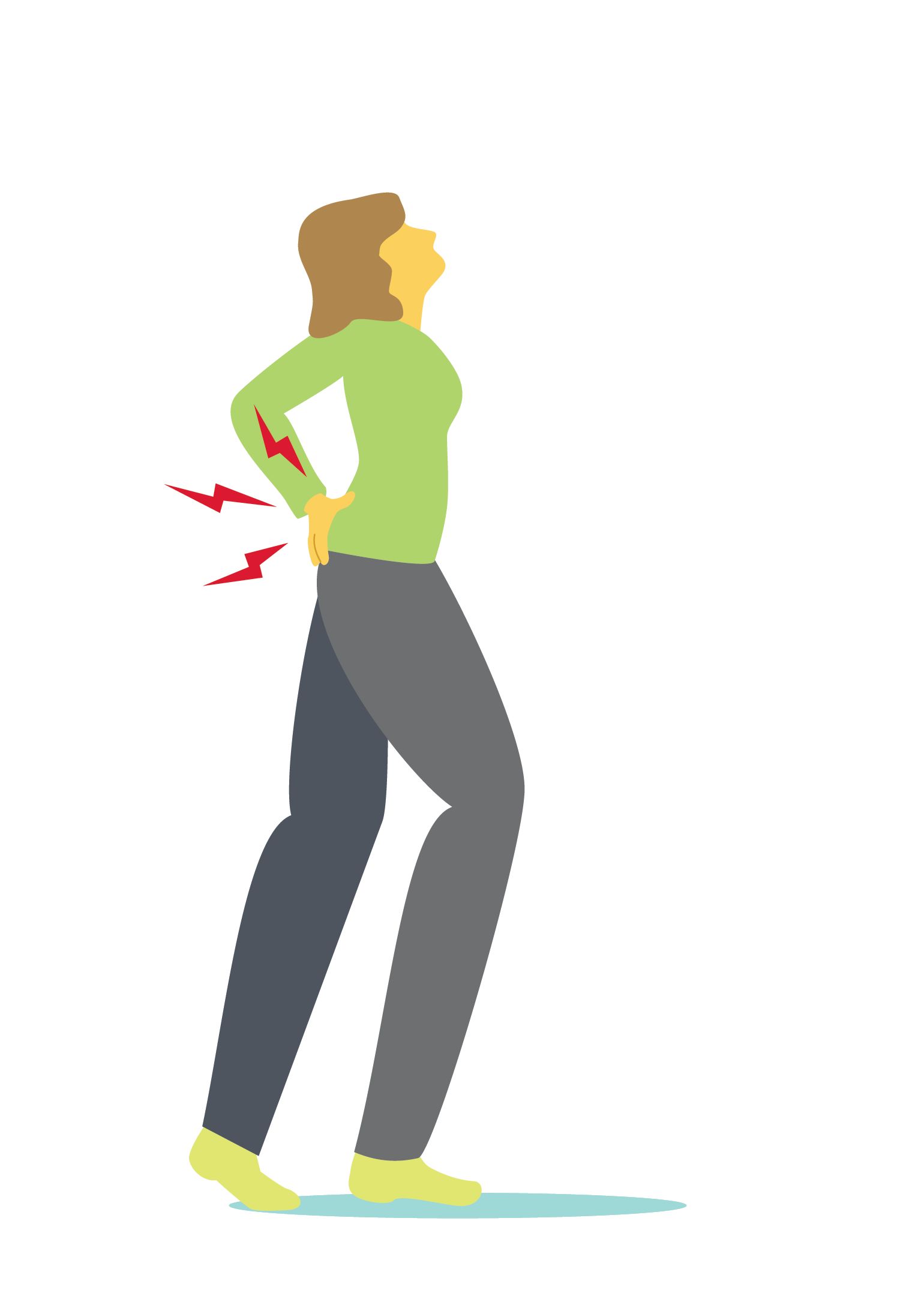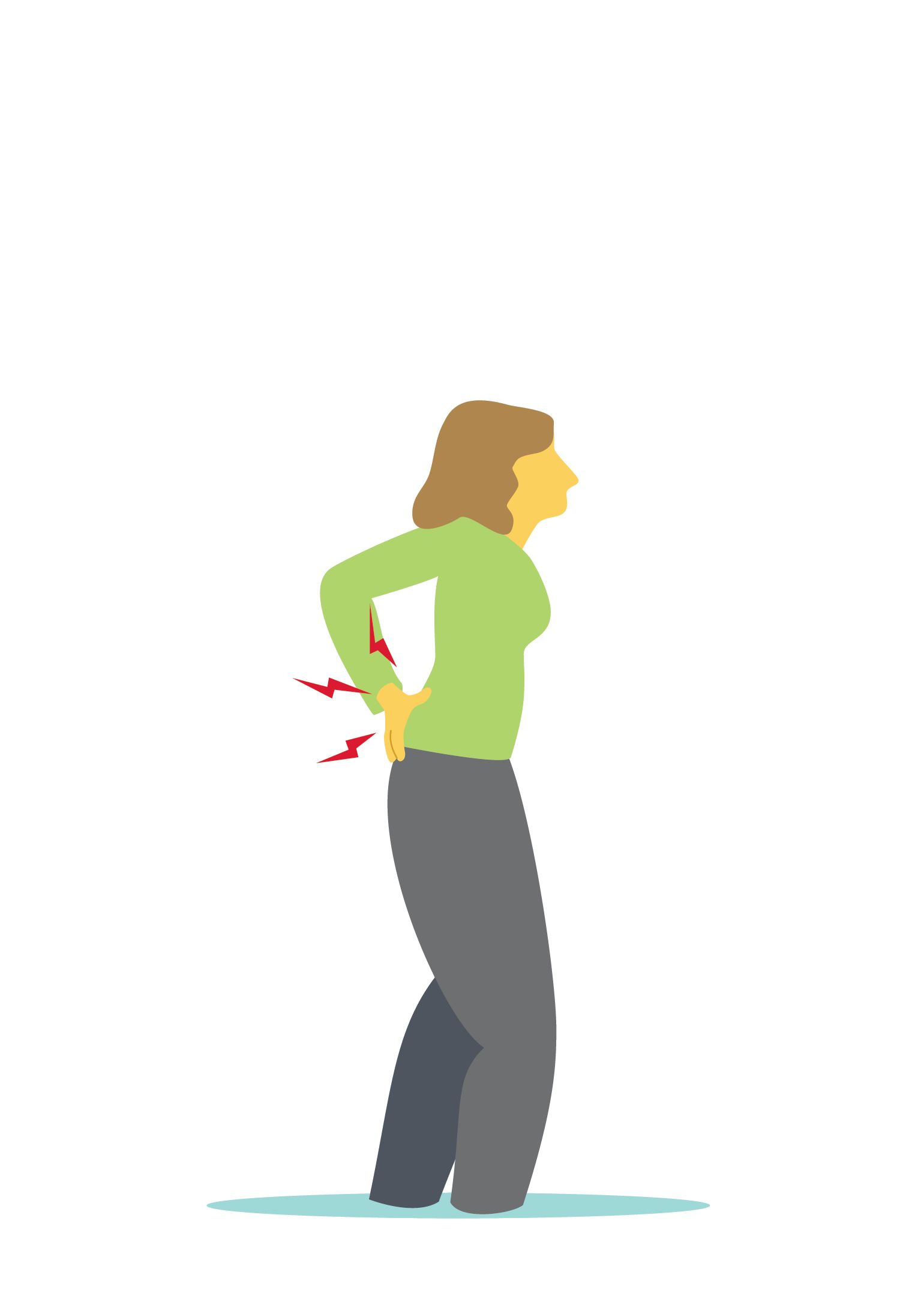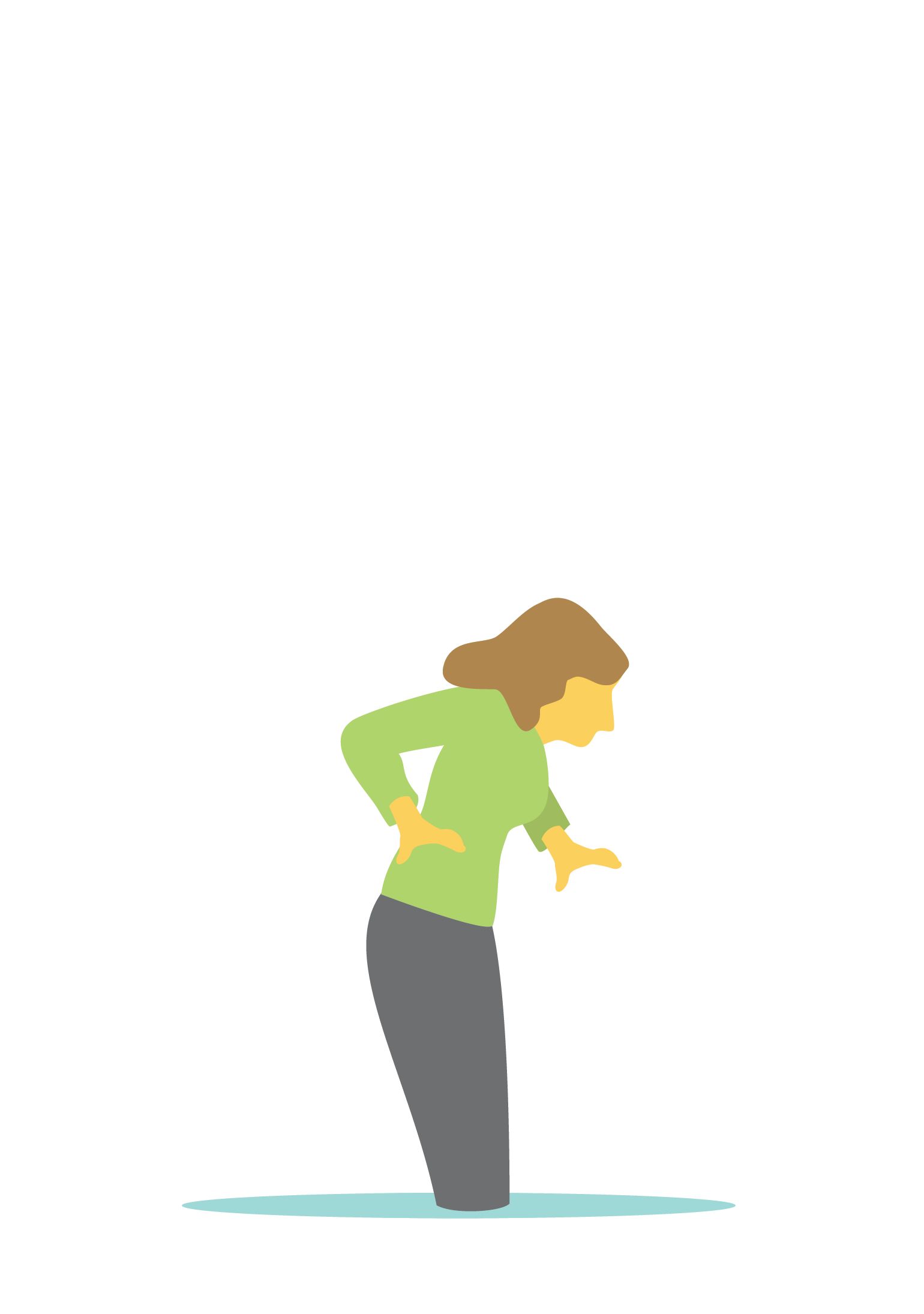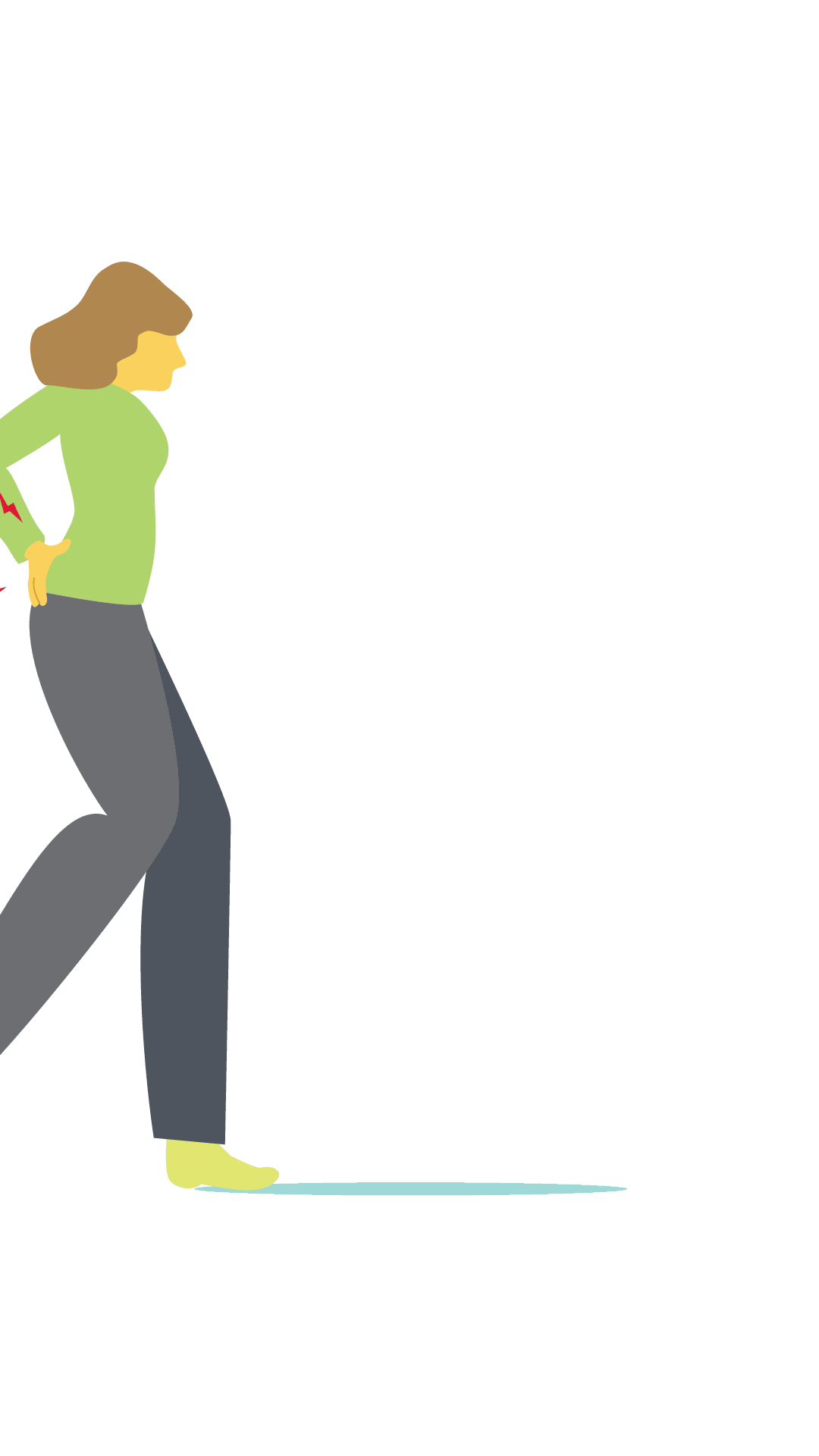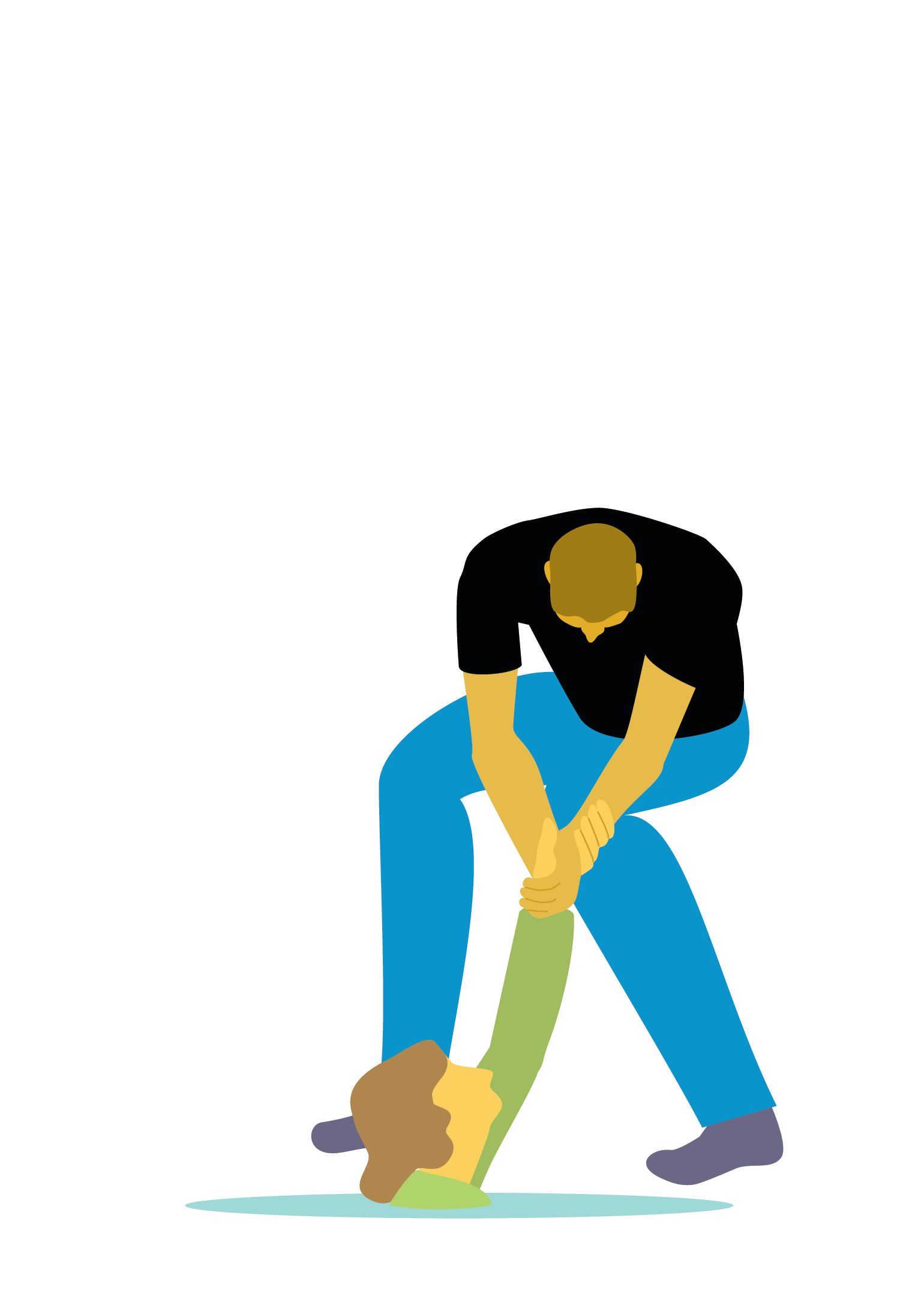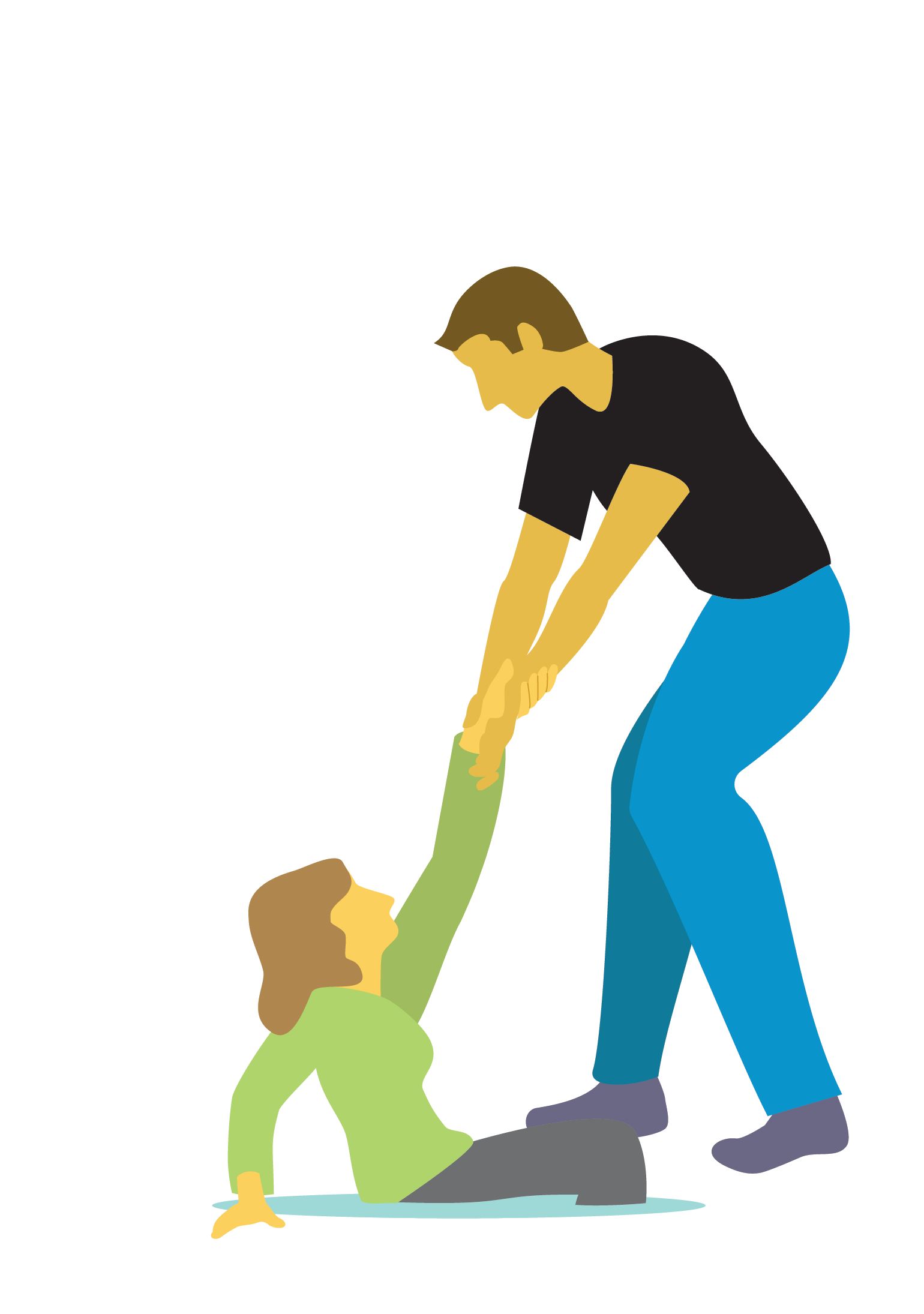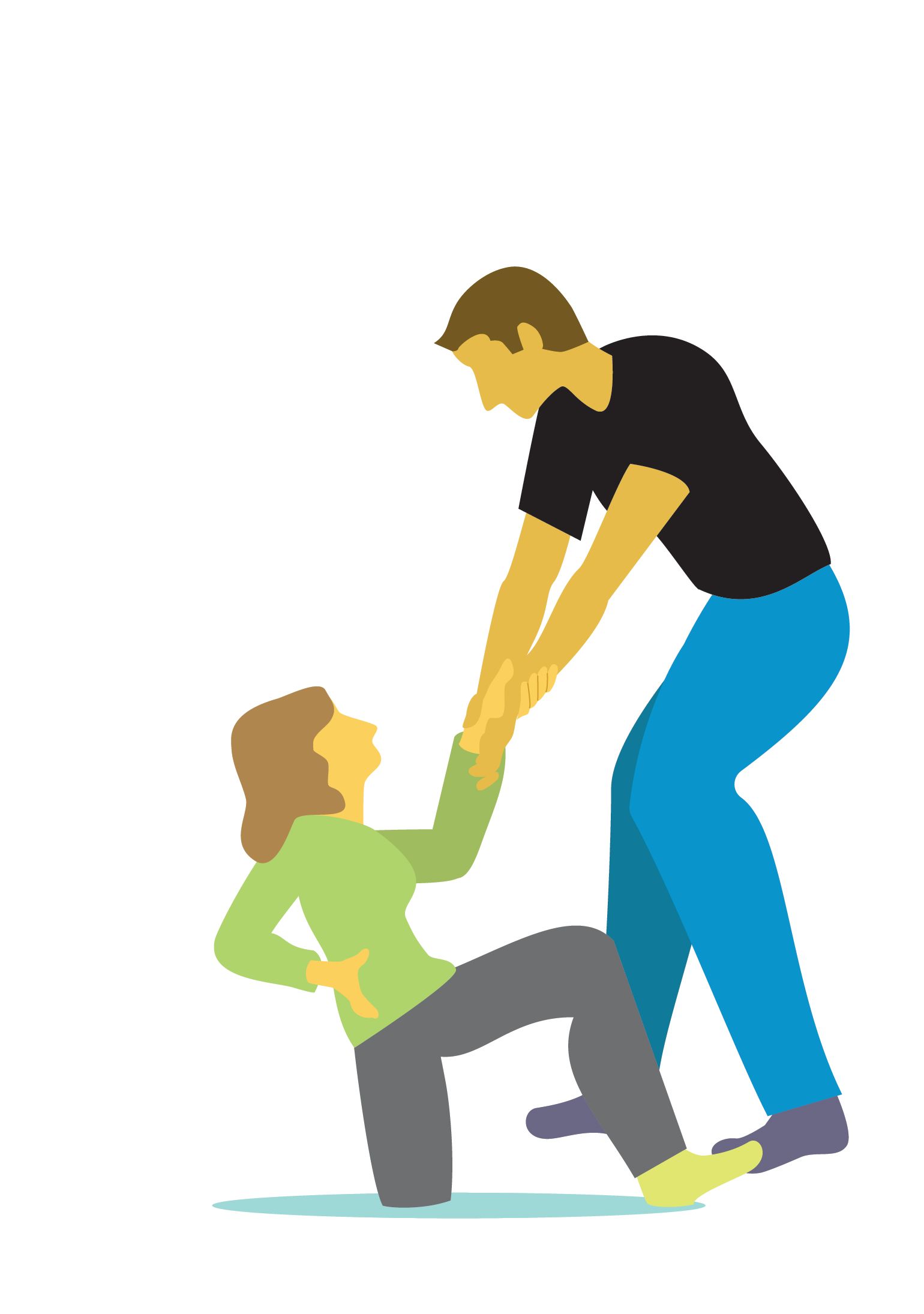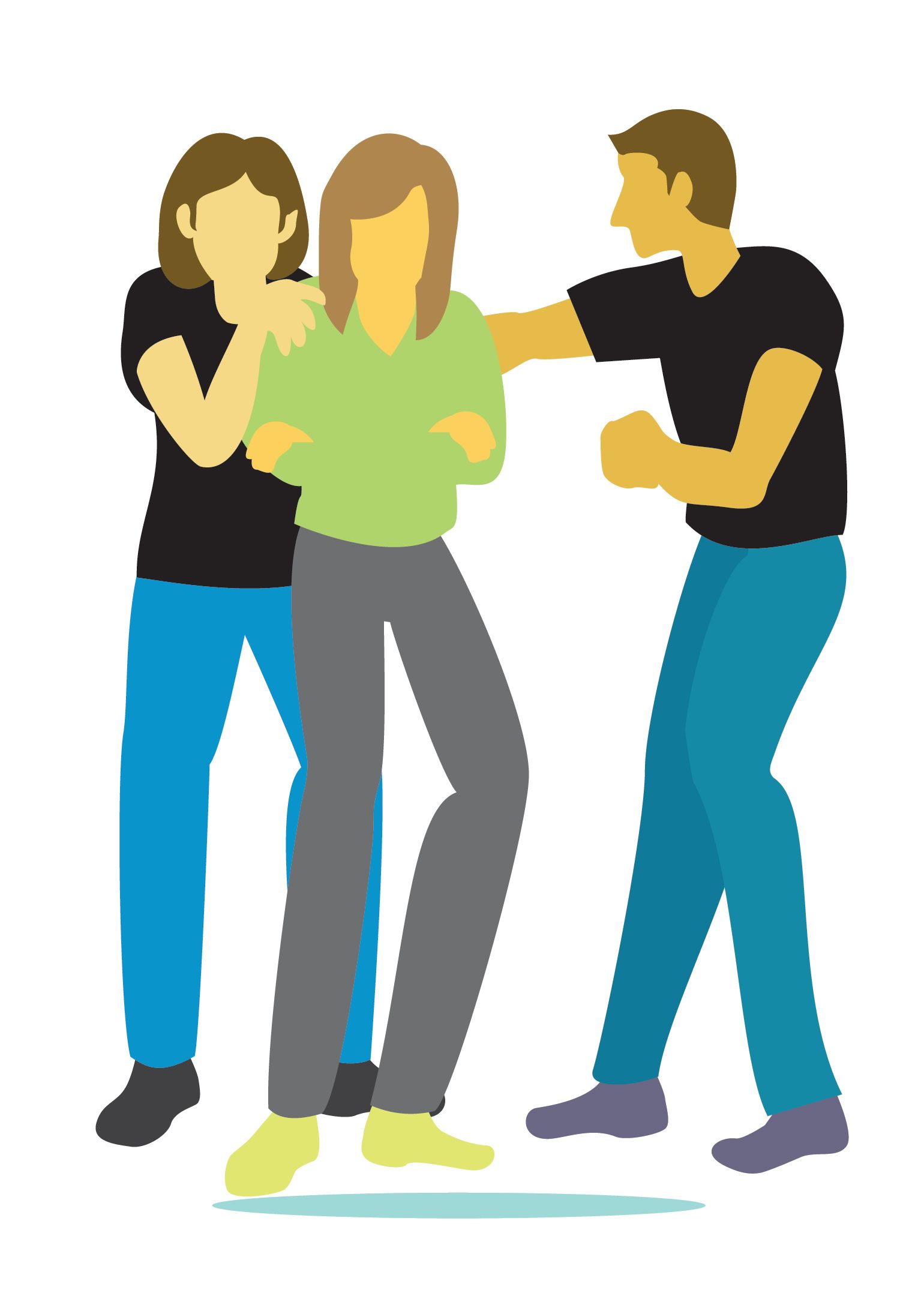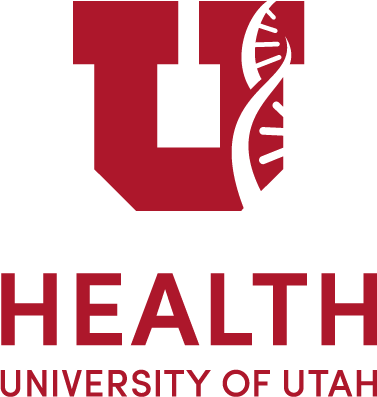A BRIDGE
TO RECOVERY
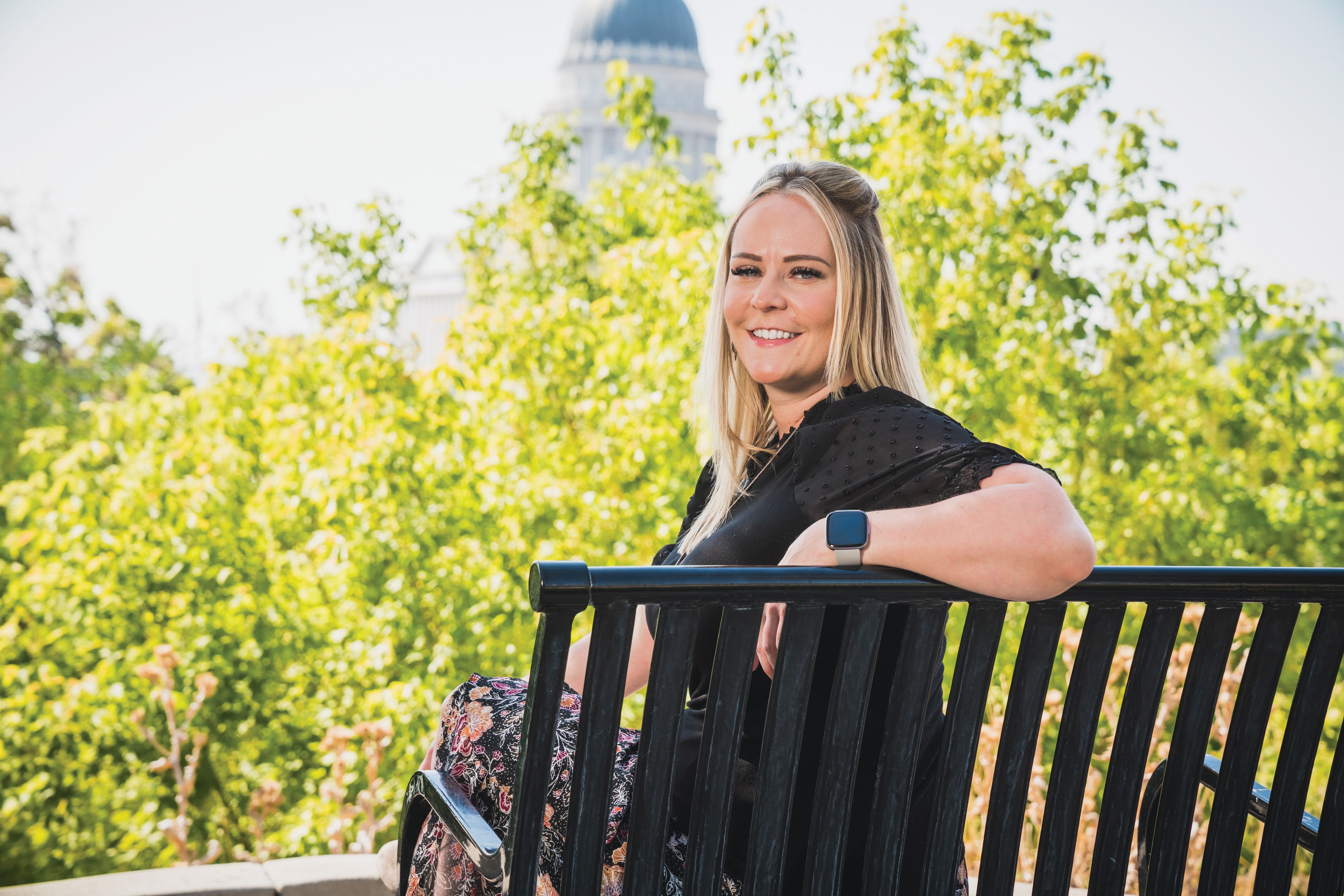

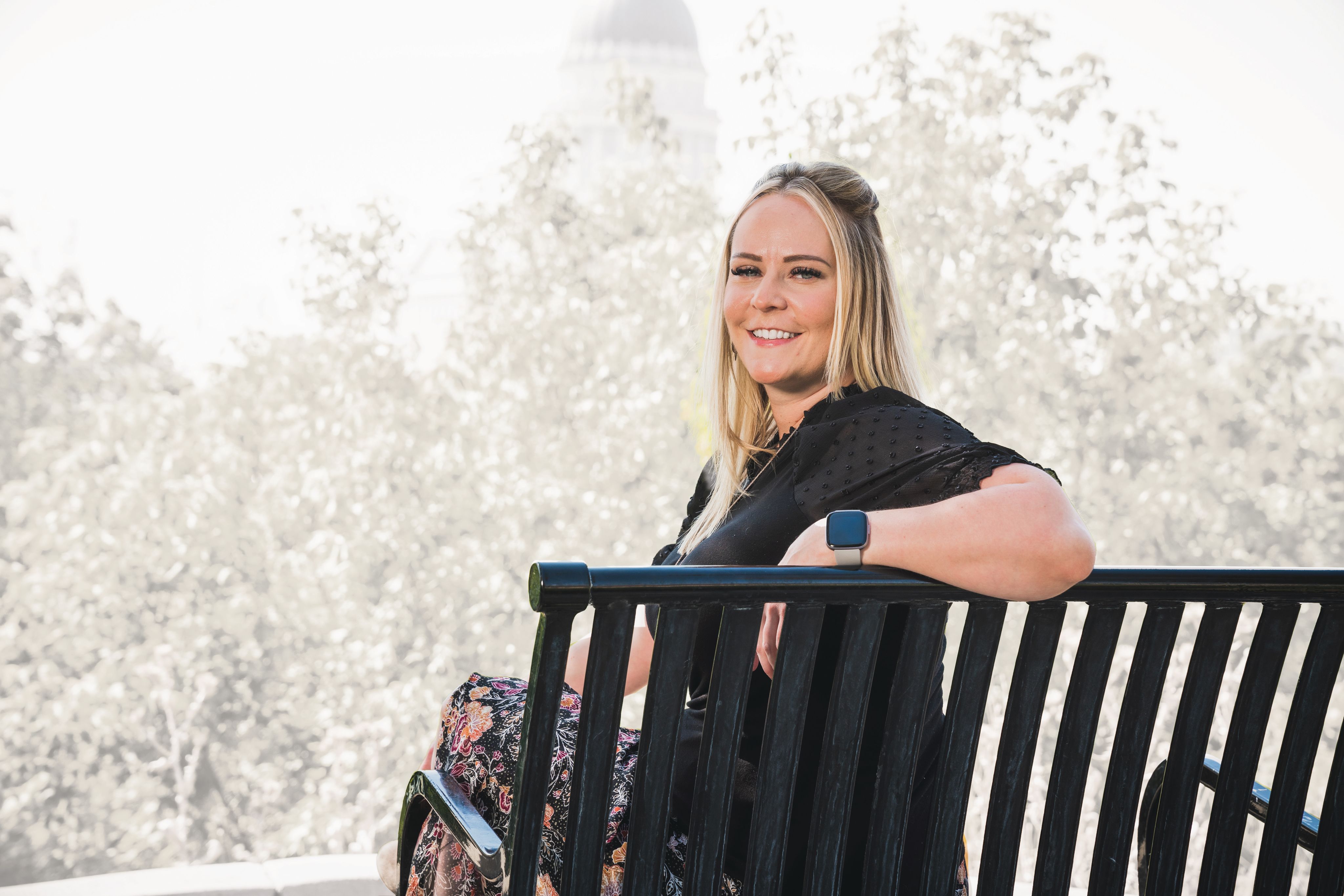
A BRIDGE
TO RECOVERY
Story by Emma Penrod
Photography by Louis Arévalo
Most patients addicted to opioids show up in the ER desperate for help. How does a traditionally fragmented health system coordinate care when a person needs it most?
The thing you need to know about addiction, Jessie Hakala says, is that most people who use opioids don’t want to be on them. Instead, drugs represent the ongoing solution to an unresolved problem. Hakala should know—her seven-year struggle with opioid addiction started with back pain.
Hakala’s moment of exposure came just after Christmas in 2010, when she slipped while cleaning and fell down two flights of stairs. The resulting back injury left her unable to stand for more than a few minutes at a time, so her doctor prescribed an opioid to fight the pain. In a rush one day, she accidentally took a second dose of her prescription pain pills, setting in motion dramatic life changes.
Flash forward seven years, when she spent two nights tucked behind a dumpster in Salt Lake City in so much pain she thought she was going to die. Withdrawals led to chills, body aches, and kidney pain. More intense agony stemmed from injuries she sustained while being beaten and robbed by a would-be dealer. Meanwhile, her lingering back pain—the reason she was prescribed opioids in the first place—remained omnipresent.
“Your hair is sick,” Hakala recalls of her last episode of withdrawals. “Your hair hurts—everything hurts. But more than anything is the kidney pain. I will always remember that pain. It feels like there are two knives stabbing in you and turning. Your muscles cramp up so you can’t move. You can’t control your bowels. I was behind a dumpster thinking I would die—and hoping I would.”
Hakala was so desperate to get off drugs that she begged officers from the Salt Lake City Police Department to arrest her and take her to jail. Now in recovery for six years, she works with the Opioid Bridge Recovery Program, a University of Utah Health initiative that connects emergency room patients experiencing opioid dependency with long-term recovery programs throughout the state.
The thing you need to know about addiction, Jessie Hakala says, is that most people who use opioids don’t want to be on them. Instead, drugs represent the ongoing solution to an unresolved problem. Hakala should know—her seven-year struggle with opioid addiction started with back pain.
Hakala’s moment of exposure came just after Christmas in 2010, when she slipped while cleaning and fell down two flights of stairs. The resulting back injury left her unable to stand for more than a few minutes at a time, so her doctor prescribed an opioid to fight the pain. In a rush one day, she accidentally took a second dose of her prescription pain pills, setting in motion dramatic life changes.
Flash forward seven years, when she spent two nights tucked behind a dumpster in Salt Lake City in so much pain she thought she was going to die. Withdrawals led to chills, body aches, and kidney pain. More intense agony stemmed from injuries she sustained while being beaten and robbed by a would-be dealer. Meanwhile, her lingering back pain—the reason she was prescribed opioids in the first place—remained omnipresent.
“Your hair is sick,” Hakala recalls of her last episode of withdrawals. “Your hair hurts—everything hurts. But more than anything is the kidney pain. I will always remember that pain. It feels like there are two knives stabbing in you and turning. Your muscles cramp up so you can’t move. You can’t control your bowels. I was behind a dumpster thinking I would die—and hoping I would.”
Hakala was so desperate to get off drugs that she begged officers from the Salt Lake City Police Department to arrest her and take her to jail. Now in recovery for six years, she works with the Opioid Bridge Recovery Program, a University of Utah Health initiative that connects emergency room patients experiencing opioid dependency with long-term recovery programs throughout the state.

An average of 25 patients addicted to opioids are admitted to University Hospital's ER each month.
Before the creation of the Bridge Program in 2019, those patients would have their overdose reversed with the medication naloxone or their severe medical problem stabilized—then be discharged back to whatever complicated life had landed them there in the first place.
That system was not designed to treat the underlying issues that cause addiction—or the myriad struggles that patients face with housing, work, transportation, and nutrition. Such a harsh reality only set addicted patients up for failure.
Sometimes the ER would ask a patient to fill out an intake form and then return in a few days—or even weeks—to see an addiction specialist.
“You don’t say to someone having a heart attack, ‘We don’t have a cardiologist here at the moment. Can you come back tomorrow?’”
-Elizabeth Howell, MD, MS, professor of psychiatry at the Spencer Fox Eccles School of Medicine at University of Utah
That timing is the greatest barrier to recovery, Howell says. For most people who recover from opioid dependency, the desire to make a change comes as a fleeting impulse in the moments after the high of the drug loses its grip but before unbearable withdrawal pain takes hold.
It's difficult to recreate that window artificially, which may explain why court orders or family ultimatums so rarely lead to long-term recovery. The perfect time? When a patient comes to the ER and finds a short window of stability.
“You don’t say to someone having a heart attack, ‘We don’t have a cardiologist here at the moment. Can you come back tomorrow?’”
-Elizabeth Howell, MD, MS, professor of psychiatry at the Spencer Fox Eccles School of Medicine at University of Utah
That timing is the greatest barrier to recovery, Howell says. For most people who recover from opioid dependency, the desire to make a change comes as a fleeting impulse in the moments after the high of the drug loses its grip but before unbearable withdrawal pain takes hold.
It's difficult to recreate that window artificially, which may explain why court orders or family ultimatums so rarely lead to long-term recovery. The perfect time? When a patient comes to the ER and finds a short window of stability.
REDESIGNING THE SYSTEM
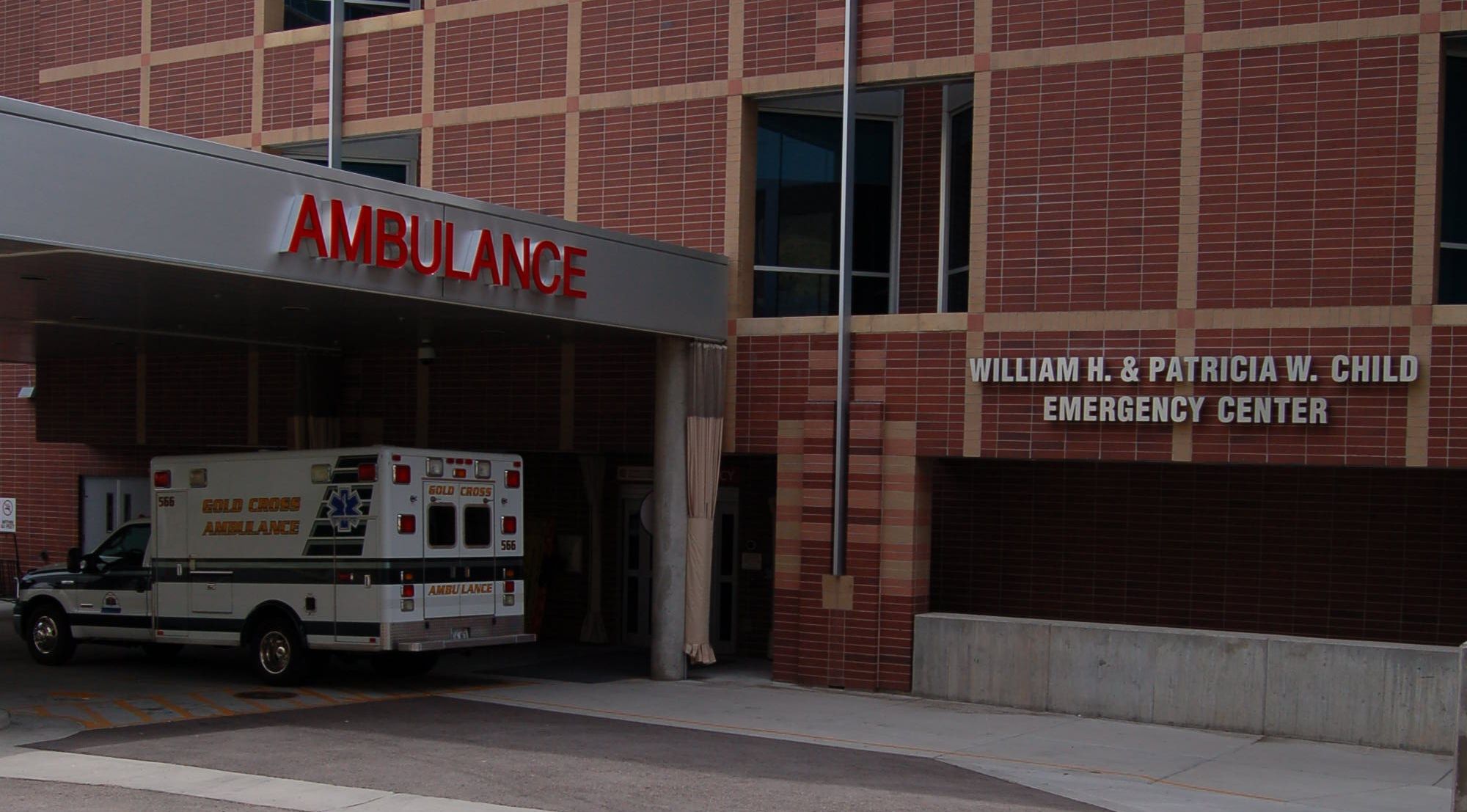
That’s why the Bridge Program is such a game changer for opioid-addicted patients in acute crisis. In the ER, they are immediately prescribed Suboxone, a medication that blocks their symptoms of withdrawal. They then work with case managers and prescribers for up to 30 days, building a bridge from the ER to dedicated treatment services, including peer-supported programs.
This rapid approach to treatment has vastly improved outcomes for patients with opioid dependency, says Rebecca Hyde, MA, who oversees recovery services at Huntsman Mental Health Institute. Without adequate physical and especially mental health care, the odds of recovery from opioid dependency are less than 50%. But of the 2,000 patients admitted to the Bridge Program in its first two years of operation, 61% followed through with subsequent appointments for additional health care—a remarkable improvement in the field of addiction medicine, Hyde says.
“The way I think of it is, addiction is like being chained to a cement block at the bottom of a pool. You can try to swim, but you’re chained to this cement block. Suboxone is a tool that cuts that chain; once the patient is above water, therapy is where they learn how to swim to the side of the pool and get out.”
-Rebecca Hyde, MA, patient services manager at Huntsman Mental Health Institute
While Hakala herself was in recovery and working as a peer support specialist by the time the Bridge Program began, she's intimately familiar with it. After launching in 2019, phone calls from the Bridge Program came in so frequently that she and her co-workers on the USARA ARCHES team had an epiphany: They should wait in their cars at the University Hospital parking lot for the next one to come in instead of wasting time driving back to their offices. They knew that timing was everything when it comes to addiction. And they wanted to be there so that the patient's first step toward recovery could start immediately.
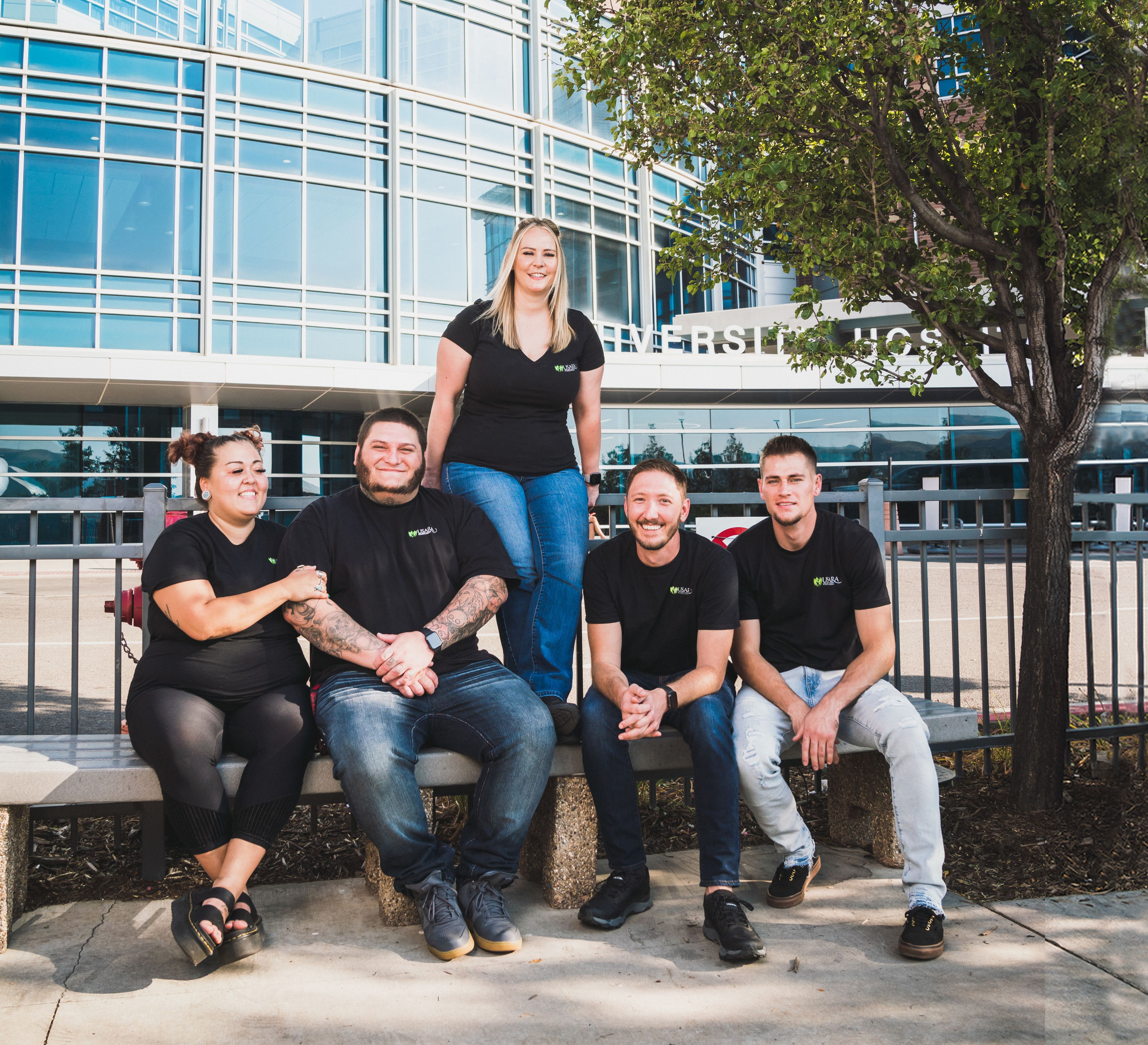
Jessie Hakala (center) and her former co-workers (left to right) Karrisa MacDonald, Jareth Williams, Mitchell Staheli, and Jesse Rich, who worked together answering calls from the Bridge Program in 2019-2020. The USARA ARCHES team talks to patients struggling with opioid addiction and substance use disorders before they're discharged from the ER at University Hospital.
SUDDEN EXPOSURE
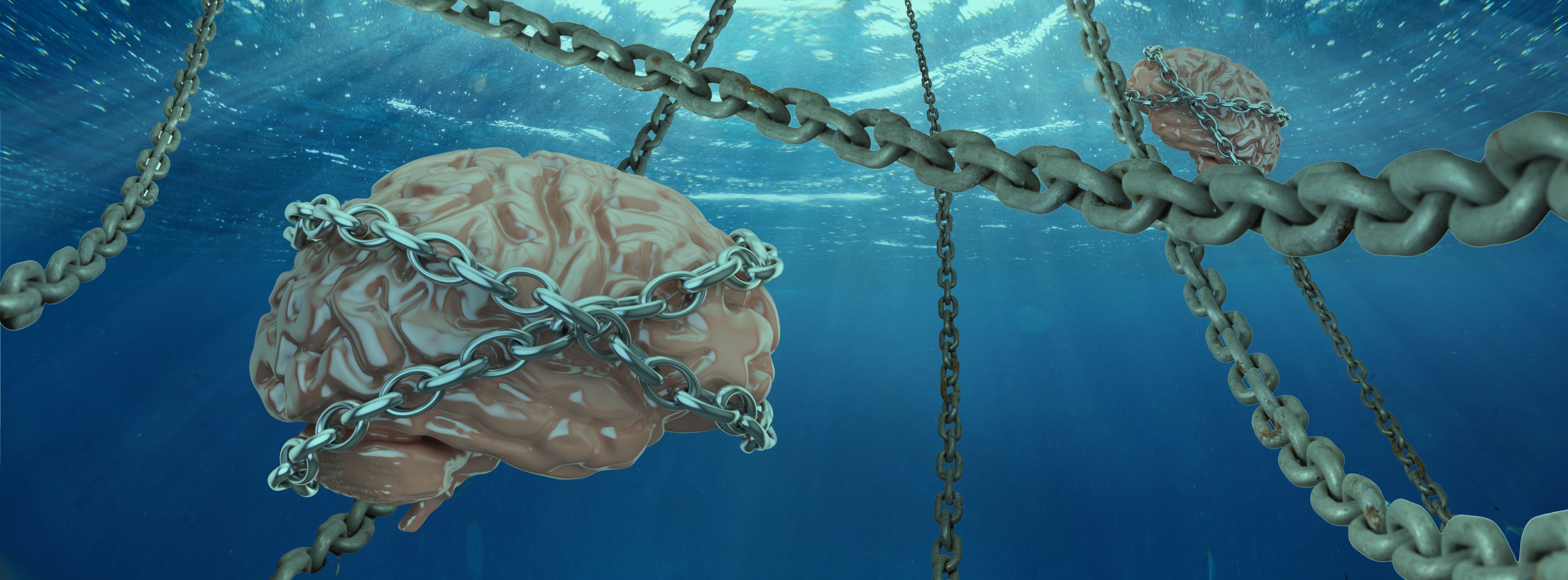
The science of addiction is still uncertain, but a handful of critical factors have become increasingly clear. Genetics and family history play a role—most people who develop a dependency have a blood relative who has struggled with addiction, according to Elizabeth Howell.
“Trauma is also a huge risk factor for addiction. It can change the brain in a way that makes you much more susceptible to wanting to use drugs or losing control over your use. Once you start using regularly, the brain doesn’t react the same to normal things in our lives.”
Another commonality is a history of unmitigated stress or anxiety, which can manifest as chronic, physical pain. Opioids may provide the first relief a patient has experienced in years. It doesn’t take severe trauma like abuse or combat to trigger this, Rebecca Hyde says. It could be as simple as raising kids, financial pressures, a failing marriage, or the fact that your parents divorced when you were young.
The final factor, Howell says, is exposure—which, for most opioid users, generally involves some kind of medical event such as an accident or surgery that prompts a prescription for painkillers. Injuries caused by athletics or working in jobs that require hard physical labor are also common. “[Addiction] has nothing to do with class or intelligence or any of that stuff,” Howell says. “It’s just like how any of us can get diabetes.”
Back pain served as the triggering event for Steve, who asked not to be identified by his real name while he searches for work after getting sober. After years of working in construction, Steve took a job at a warehouse moving 100-pound boxes in and out of a freezer.
One day, a co-worker overheard his frequent complaints about back pain and offered to share his pain prescription to help him get through the workday. Steve knew there was a risk of dependency due to his family history, but in that moment, the pain in his back was so severe that nothing else mattered. “I took them and felt like a million bucks,” Steve says. “I’d go home and clean my whole house—it was great.” He figured that, as long as he was still working and paying his bills, he could “handle the drugs.”
Before too long, the co-worker’s doctor got wise that something was amiss and refused to refill the prescription. Then the co-worker showed up with a $10 bag of heroin. Steve never thought he’d use heroin. But facing withdrawal and the return of his back pain, he told himself this was a one-time deal. “It happens so slow and then so fast,” he says. “By then, I was strung out and had to get well, so I thought I’d just smoke a little bit until I could get a pill.”
BARRIERS TO HOPE

Hakala’s path to addiction was also a slippery slope. The dose she needed to avoid feeling pain increased from one pill to two, three, and even four. Because she had a prescription and took the pills to cope with pain, her experience didn’t seem to align with her perception of addiction. “I would ask myself, ‘Am I addicted? No, I’m just taking this for pain,’” she remembers. “‘I need it so I can function.’ Yeah, I took more than a couple, but I had to
Her front finally broke down at her son’s birthday party, when she blacked out after taking the opioids with alcohol. The next morning, she threatened to take her own life, prompting her husband to drive her to the hospital. On the way there, she told him she feared she had become addicted to her pain medication. On her second day as an inpatient, doctors at U of U Health moved her to a detox unit as the withdrawal symptoms set in. Her husband gave her an ultimatum: get clean or don’t come back home.
She spent the next 90 days in rehab as a model patient and came home seemingly free of the opioids. But when she returned to work, her employer fired her upon discovering the reason why she had been in the hospital. Relapse ensued. Hakala called a friend she had met in rehab and asked him if he knew how to get some Percocet. He showed up with heroin. “I got mad at him,” Hakala recalls, “but he said an opiate was an opiate. So I said I would use one time. The high was strong, and heroin was cheaper and easier to get.”
When people with opioid dependency encounter repeated, seemingly insurmountable barriers to recovery, they can quickly conclude that a return to life as they once knew it is impossible. In their frustration, they may even give up on the process. The stigma of addiction and the difficulty of obtaining steady employment are two common barriers—why get off drugs if you can’t earn enough to support yourself?
Steve continued to use heroin for about six years after being introduced to the drug by his co-worker. Over time, his life began to unravel. He missed work to look for heroin and ultimately lost his job. Eventually, his sister, with whom he had been living, told him he wasn’t welcome at her house as long as he was high. He found himself on the streets. “I was just done,” Steve recalls. “Hanging out on the streets, the only real person I’ve got is my sister, and she was disgusted with me. That was heartbreaking.”
Steve learned about the Bridge Program from an acquaintance, who told him he could be admitted through the University Hospital emergency room. The entire drive up to the hospital, Steve recalls, he kept thinking that all he needed was a little more heroin and he’d be good for another day. Instead, he says, he got out of the car, shut the door, and told himself, “I can do this.” He went inside and explained that he was currently experiencing withdrawals from heroin. To his surprise, they told him to take a seat—a doctor would be with him shortly.
Hakala’s path to addiction was also a slippery slope. The dose she needed to avoid feeling pain increased from one pill to two, three, and even four. Because she had a prescription and took the pills to cope with pain, her experience didn’t seem to align with her perception of addiction. “I would ask myself, ‘Am I addicted? No, I’m just taking this for pain,’” she remembers. “‘I need it so I can function.’ Yeah, I took more than a couple, but I had to
Her front finally broke down at her son’s birthday party, when she blacked out after taking the opioids with alcohol. The next morning, she threatened to take her own life, prompting her husband to drive her to the hospital. On the way there, she told him she feared she had become addicted to her pain medication. On her second day as an inpatient, doctors at U of U Health moved her to a detox unit as the withdrawal symptoms set in. Her husband gave her an ultimatum: get clean or don’t come back home.
She spent the next 90 days in rehab as a model patient and came home seemingly free of the opioids. But when she returned to work, her employer fired her upon discovering the reason why she had been in the hospital. Relapse ensued. Hakala called a friend she had met in rehab and asked him if he knew how to get some Percocet. He showed up with heroin. “I got mad at him,” Hakala recalls, “but he said an opiate was an opiate. So I said I would use one time. The high was strong, and heroin was cheaper and easier to get.”
When people with opioid dependency encounter repeated, seemingly insurmountable barriers to recovery, they can quickly conclude that a return to life as they once knew it is impossible. In their frustration, they may even give up on the process. The stigma of addiction and the difficulty of obtaining steady employment are two common barriers—why get off drugs if you can’t earn enough to support yourself?
Steve continued to use heroin for about six years after being introduced to the drug by his co-worker. Over time, his life began to unravel. He missed work to look for heroin and ultimately lost his job. Eventually, his sister, with whom he had been living, told him he wasn’t welcome at her house as long as he was high. He found himself on the streets. “I was just done,” Steve recalls. “Hanging out on the streets, the only real person I’ve got is my sister, and she was disgusted with me. That was heartbreaking.”
Steve learned about the Bridge Program from an acquaintance, who told him he could be admitted through the University Hospital emergency room. The entire drive up to the hospital, Steve recalls, he kept thinking that all he needed was a little more heroin and he’d be good for another day. Instead, he says, he got out of the car, shut the door, and told himself, “I can do this.” He went inside and explained that he was currently experiencing withdrawals from heroin. To his surprise, they told him to take a seat—a doctor would be with him shortly.
HOW THE OPIOID BRIDGE RECOVERY PROGRAM WORKS

When patients like Steve show up in the ER, they are evaluated by an emergency medicine resident and their attending physician, who establish immediate medical needs and prescribe Suboxone.
Next, a peer support specialist that shares a common experience of addiction and recovery talks with the patients.
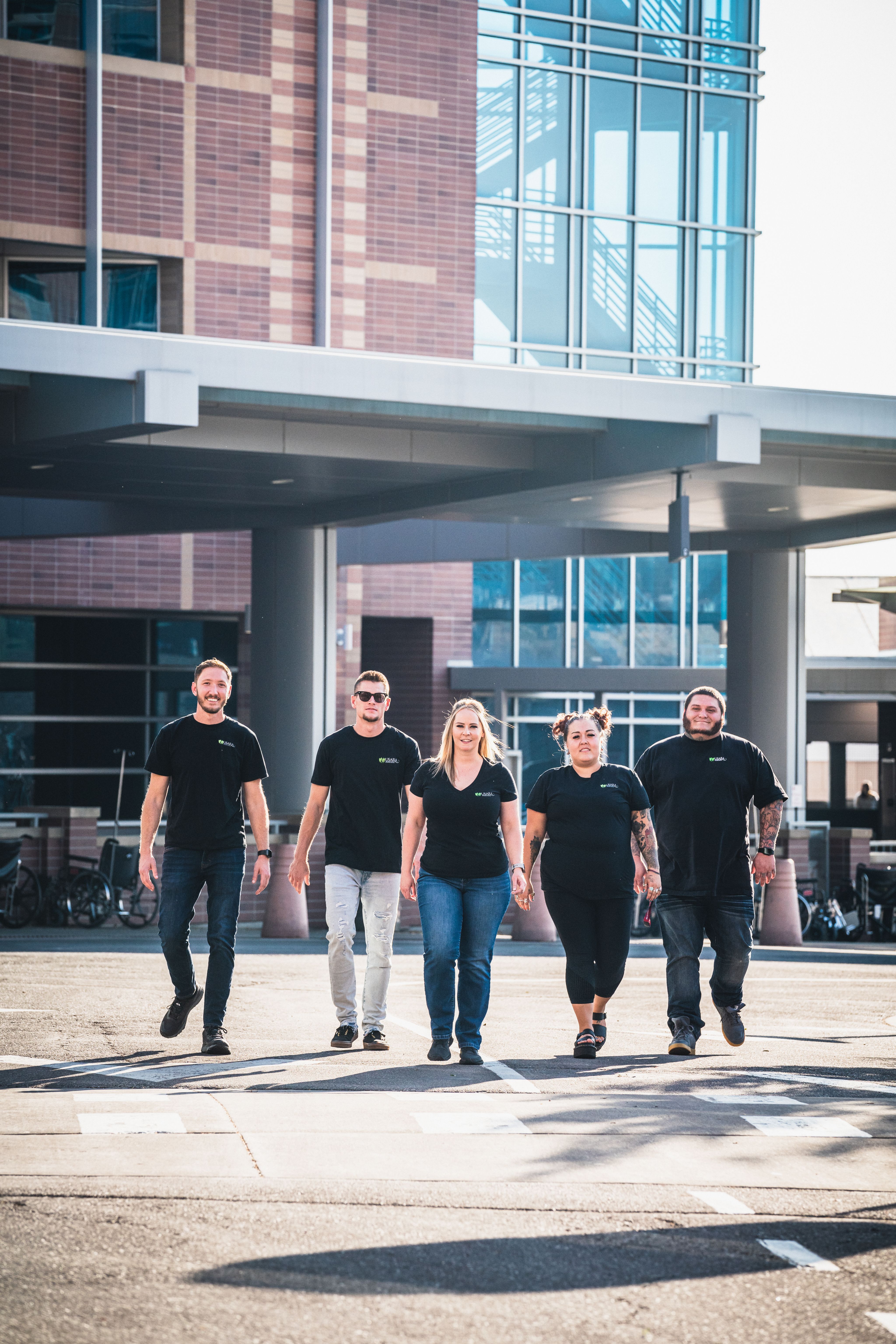
Once patients are discharged from the ER, the Bridge Program follows up within five days to renew their prescriptions, set up a longer medical evaluation, and navigate the insurance process.
Bridge Program staff identify potential barriers to long-term recovery. These include homelessness, unemployment, food insecurity, mental health issues, and physical conditions.
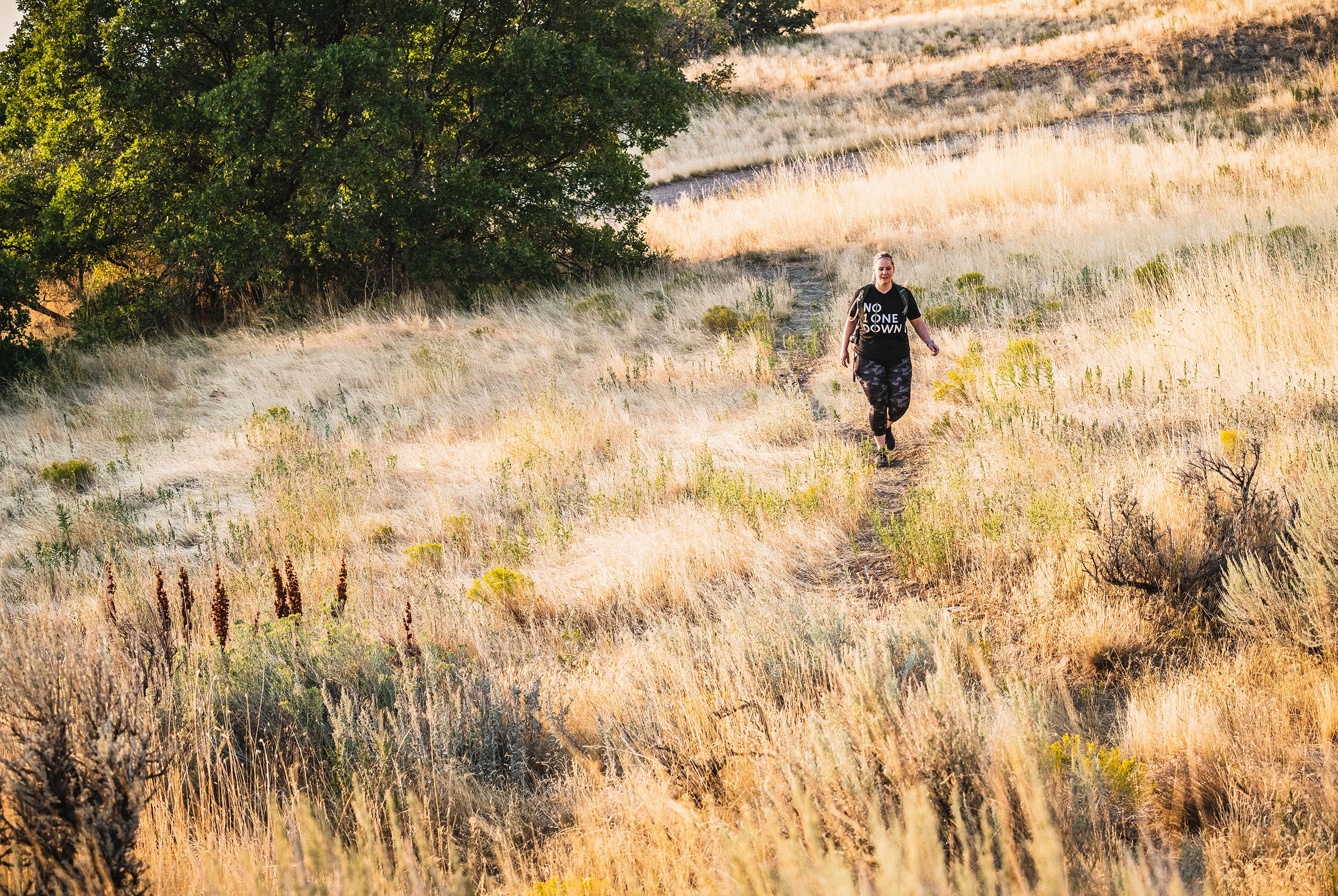
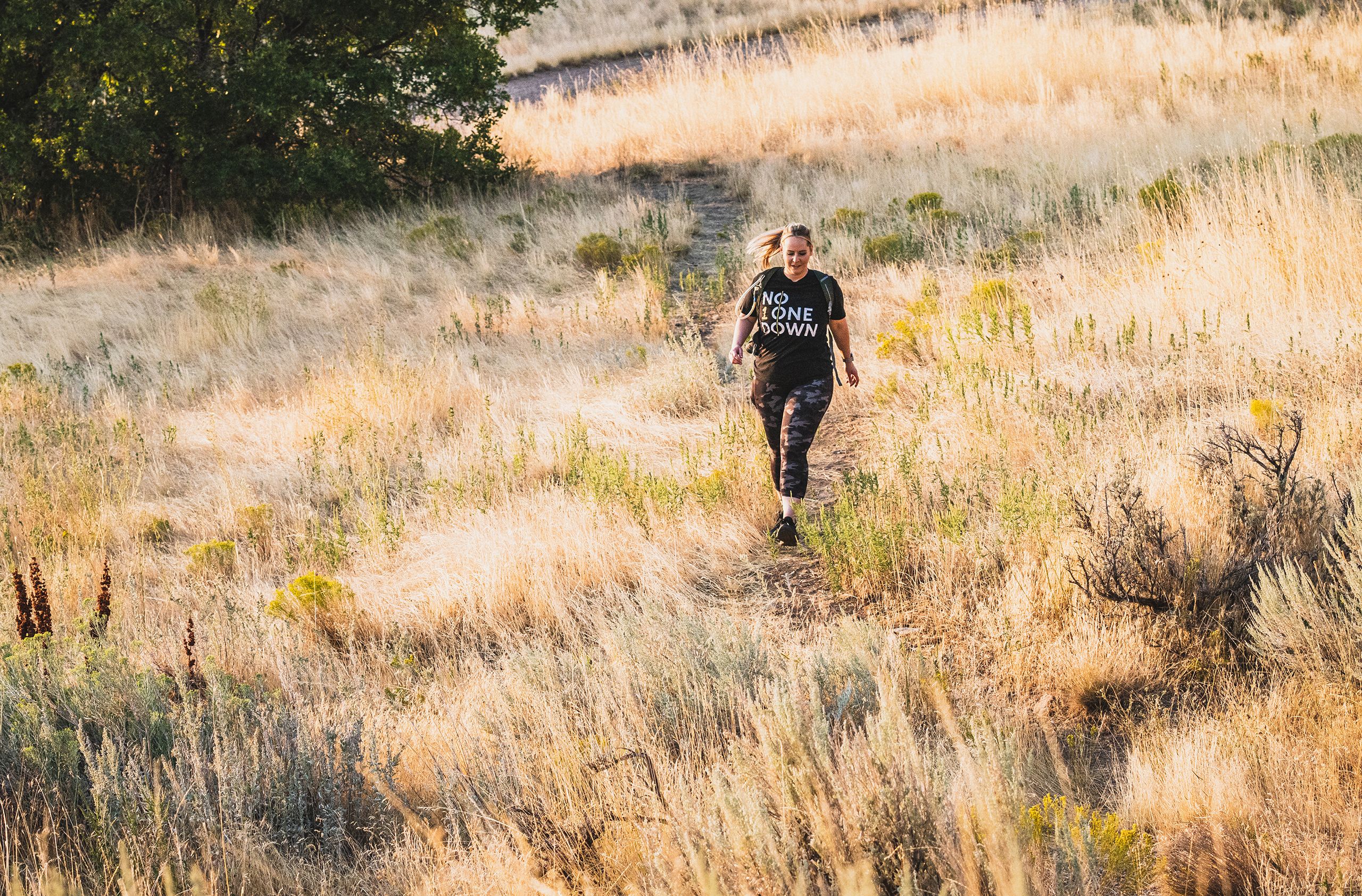

“I CAN LIVE NOW”
Jessie Hakala struggled through seven years of addiction. After two attempts at rehab and a stint in jail, she finally received successful treatment with Suboxone and a spinal block to stop her back pain. Committed to rebuilding her life, she’s now been sober for almost six years and continues her career as a substance abuse care coordinator.
“It takes, on average, six to 10 treatment centers before people actually get into long-term recovery,” she says. Before each of those rehab attempts come the multiple ER visits someone like Hakala once endured. Working with the Bridge Program to reduce that time and help others achieve recovery faster, she says, is an honor.
“I have true connections with people,” Hakala says of her life today. “I have hard days, but overall, I’m happy. I can buy my own car, I can buy food, I can take my kids to the movies.”
Jessie Hakala struggled through seven years of addiction. After two attempts at rehab and a stint in jail, she finally received successful treatment with Suboxone and a spinal block to stop her back pain. Committed to rebuilding her life, she’s now been sober for almost six years and continues her career as a substance abuse care coordinator.
“It takes, on average, six to 10 treatment centers before people actually get into long-term recovery,” she says. Before each of those rehab attempts come the multiple ER visits someone like Hakala once endured. Working with the Bridge Program to reduce that time and help others achieve recovery faster, she says, is an honor.
“I have true connections with people,” Hakala says of her life today. “I have hard days, but overall, I’m happy. I can buy my own car, I can buy food, I can take my kids to the movies.”
“I can feel the good and the bad. I can live now.”
-Jessie Hakala
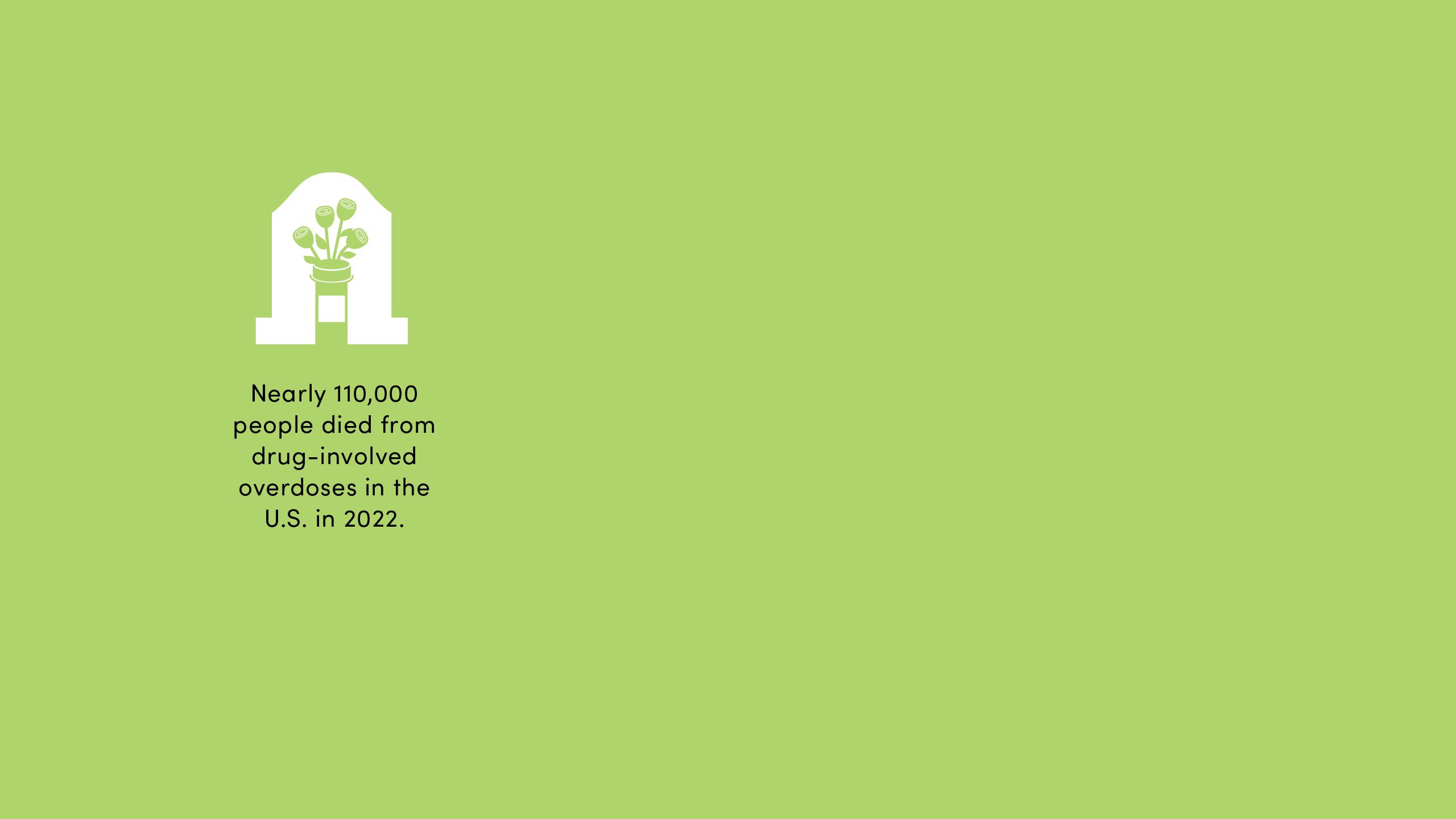
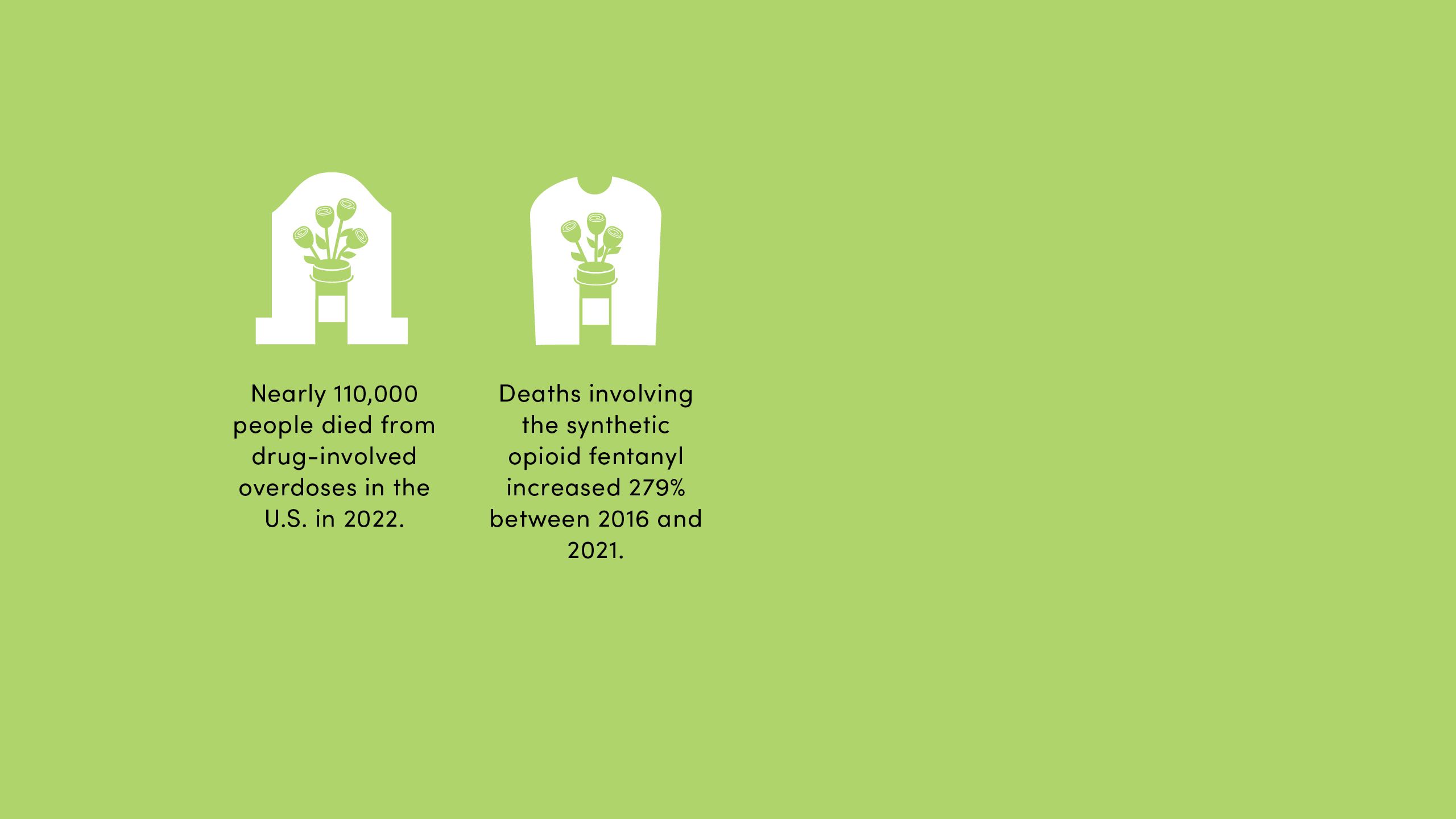
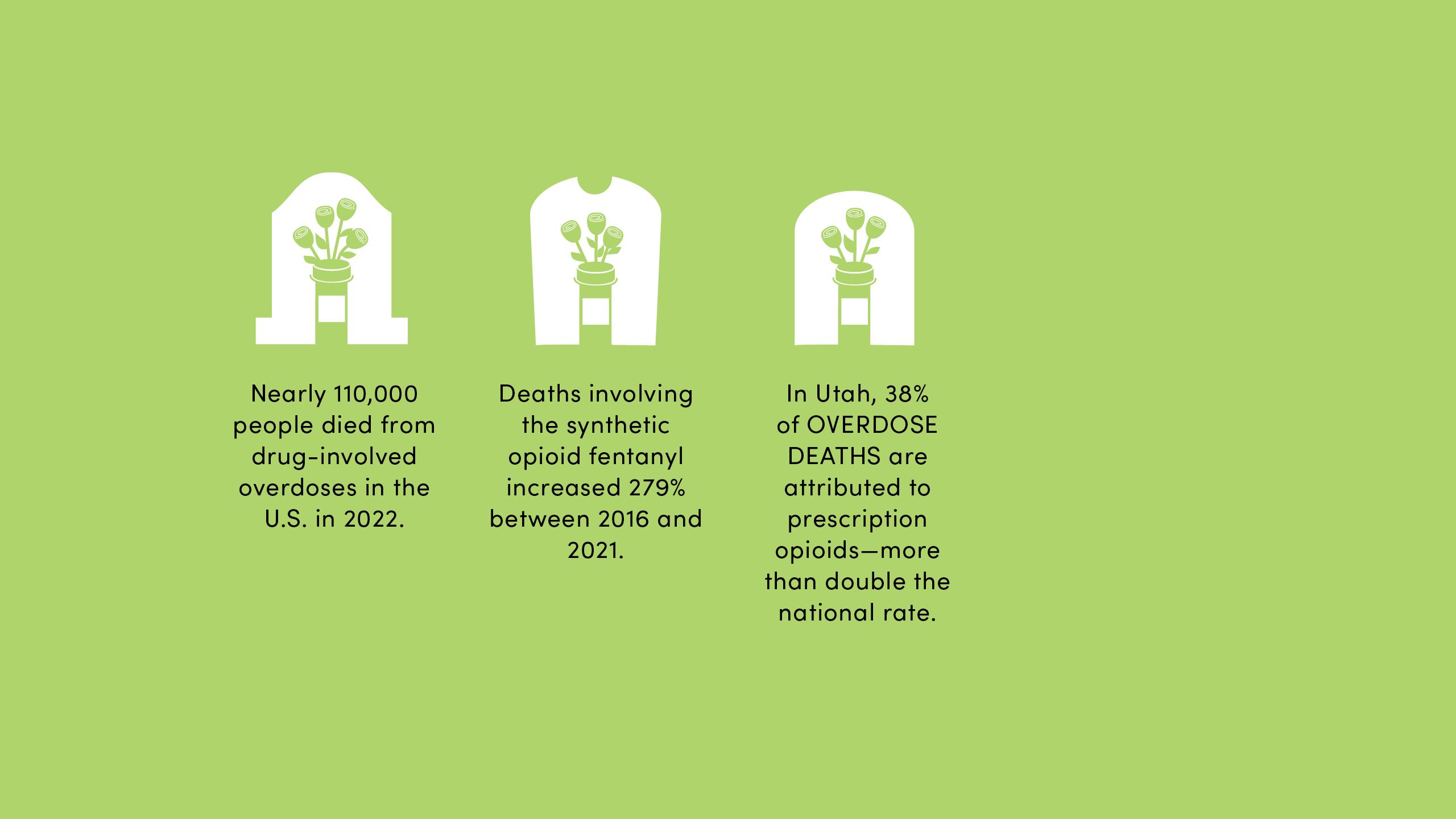
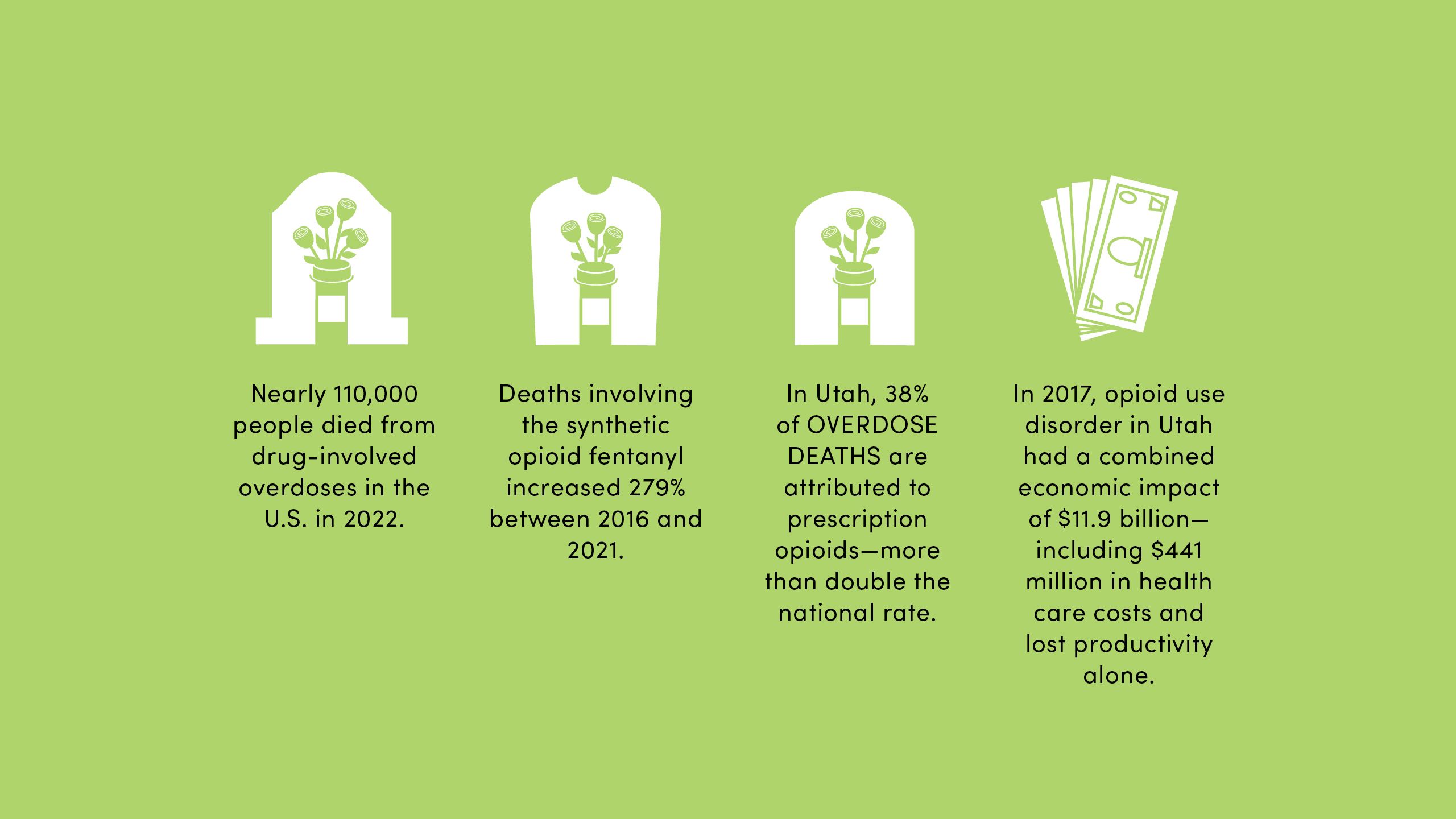


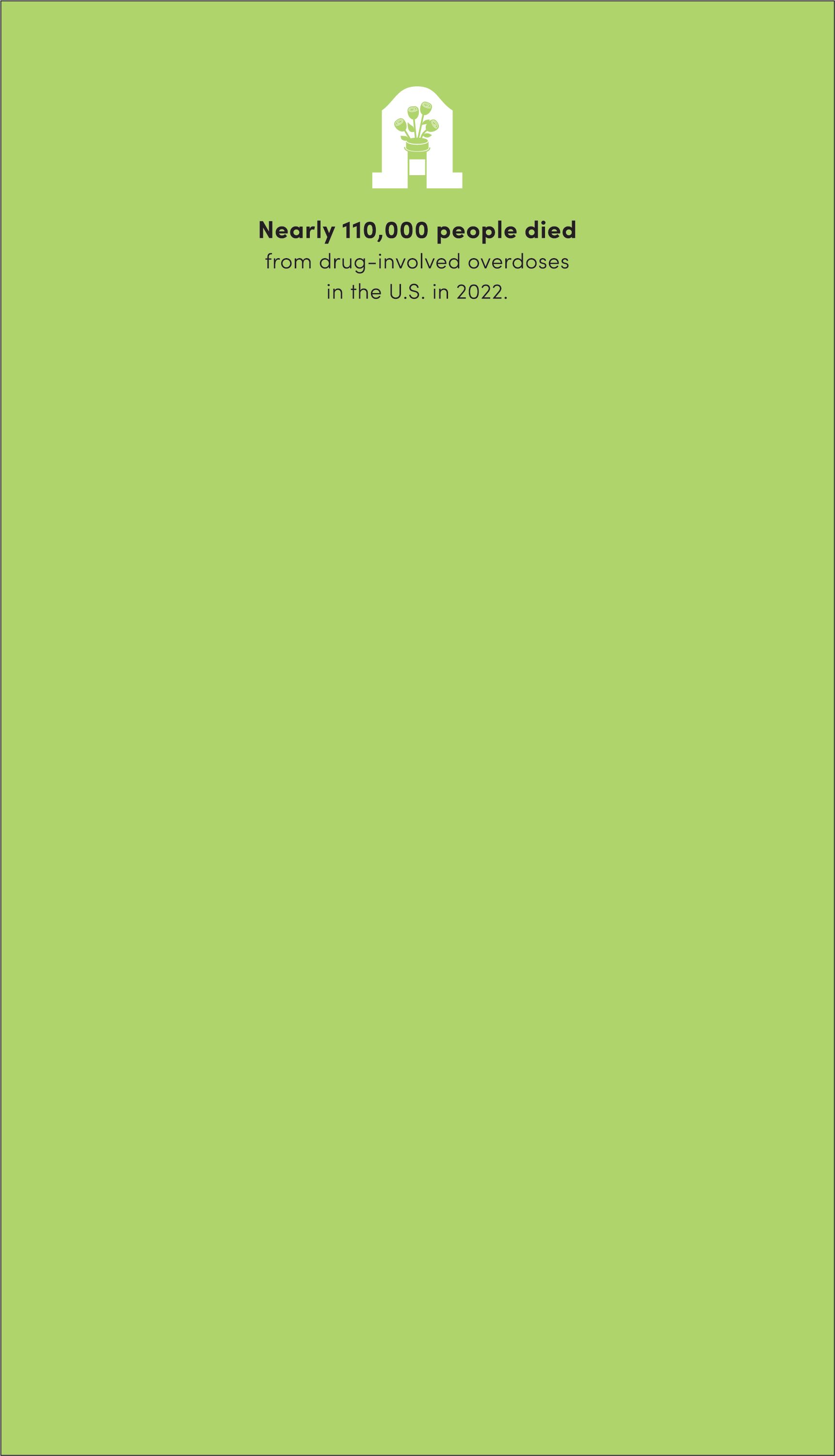

Data Sources
1. Data Shows U.S. Drug Overdose Deaths Top 100,000 in 2022 (CDC, May 18, 2023)
2. Fentanyl Overdose Death Rates More Than Tripled From 2016 to 2021 (CDC, May 3, 2023)
3. Utah Health Indicator Report of Drug Overdose and Poisoning Incidents (Utah Department of Health & Human Services, March 27, 2023)
4. State-Level Economic Costs of Opioid Use Disorder and Fatal Opioid Overdose — United States, 2017 (Morbidity and Mortality Weekly Report, April 16, 2021)
A Bridge to Recovery
August 11, 2023
Story: Emma Penrod
Photography: Louis Arévalo
Design: Stace Hasegawa
Editor: Nick McGregor
Publisher: Amy Albo

